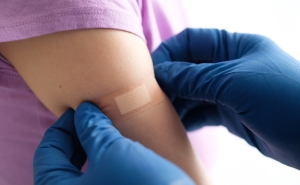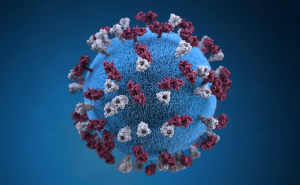A Safe Summer Starts With You
For a safe summer, prevention and preparation are key.

As summer begins and schools let out, more people are spending time outside, soaking up sun, getting active, traveling for vacation, and hosting family and friends.
While most people associate these warmer months with fun and relaxation, it also can be a time of unpredictability, with more risks for injury. There are more cars on roadways, beaches are crowded, temperatures spike, and kids are out of school, playing outdoors with friends.
“Summertime is a time of leaving your known environment and going into an unknown one,” says Eileen McDonald, MS, senior scientist in Health, Behavior and Society. “And if you don't think about the risks that might meet you in that new environment, you're putting yourself and your family [at risk] for potential injuries.”
You can’t control your environment, but you can control how you manage risk within it. To keep you and your family safe this summer, here’s what you need to know.
BE SAFE IN THE SUN
While some sunlight is necessary for our bodies to produce vitamin D, too much sun can pose a number of health risks. Protecting your skin from the sun’s UV rays is the best way to limit your risk of sunburn and skin cancer.
A person’s risk for melanoma doubles with more than five sunburns. And just one severe sunburn in childhood or adolescence more than doubles a person’s chances of developing skin cancer later in life.
Limiting sun exposure can be simple:
- Stay in the shade—particularly during midday when UV rays are at their peak.
- Wear a wide-brimmed hat, sunglasses, and a long-sleeved shirt.
- Use a broad-spectrum sunscreen with SPF 30 or higher.
Avoid products labeled “tanning oil,” and for the best protection, apply sunscreen generously 30 minutes before going outdoors. Reapply every two hours, especially after swimming or sweating. Keep in mind: Anyone can get sunburn, regardless of race or ethnicity. Having a darker skin tone doesn’t protect you from the sun’s rays.
WHEN THINGS HEAT UP
High temperatures can be dangerous for everyone, but especially for vulnerable groups, like people who have chronic medical conditions or are pregnant, as well as young children, older adults, athletes, and people who work outdoors.
In the U.S., each year there are an average of 702 heat-related deaths, 67,512 emergency department visits due to heat, and an average of 9,235 people hospitalized due to heat.
Heatstroke, the most dangerous heat-related illness, may occur if your body temperature rises to 103° F or more. Signs include:
- Skin that is flushed, dry, and hot to the touch
- Lack of sweating
- Rapid breathing
- Headache
- Dizziness or confusion
- Irrational behavior
- Convulsions
- Unresponsiveness
Seek medical help immediately if someone is suffering from heat stroke. Call 911 and move the victim to a cool place. Never force the victim to drink liquids.
The best way to avoid a heat-related illness is to limit time outdoors during hot days. According to the CDC, air conditioning is the best way to cool down. If your home is not air-conditioned, reduce your risk by spending time in public facilities that are.
STAY HYDRATED
Dehydration can happen at any time, but it’s more likely in higher temperatures, especially with increased exertion.
Some groups are more vulnerable to dehydration—men are more likely to have inadequate hydration than women, for example. Infants, kids, older adults, people with chronic illnesses, people who are sick with a virus (like the flu), people who spend a lot of time outdoors, and people who are breastfeeding are also more likely to become dehydrated.
Symptoms of dehydration include:
- Muscle cramping
- Urinating less often than normal
- Dark-colored urine
- Dry skin
- Feeling lethargic or confused
- Fainting
In children, these symptoms may differ.
Alcoholic, caffeinated, and sugary beverages can actually dehydrate your body further. Plain, carbonated, or flavored water or sports drinks with electrolytes should be your go-to choices when hydrating.
SWIMMING HAZARDS
Swimming—whether in pools, lakes, or at the beach or a waterpark—is excellent exercise and a great way to cool down. But swimming comes with risks: Every year in the U.S. there are an estimated 4,000 fatal unintentional drownings and 8,000 nonfatal drownings.
The CDC reports that in the U.S. more children ages 1–4 die from drowning than any other cause, and for children ages 5–14, drowning is the second-leading cause of unintentional injury death after motor vehicle crashes.
Here are some tips to limit your drowning risk:
- At the beach, swim when and where lifeguards are on duty.
- Be aware of hazardous beach conditions like rip currents and rough surf.
- Get out of the water at the first sign of lightning or rumble of thunder.
- Stay indoors and away from the water for 30 minutes after seeing lightning or hearing thunder.
When visiting a swimming pool, ensure there is proper fencing to prevent young children from gaining access to the pool area without caregivers’ knowledge.
If you do not know how to swim, taking swimming lessons can significantly reduce your drowning risk. Using a life jacket during water activities—like swimming, boating, and other water sports—can also prevent drowning.
HANDLING FOODS OUTDOORS
If you’re planning a family cookout, picnic, or camping trip, make sure your plans include food safety.
Foodborne illnesses tend to increase during the summer months because bacteria multiply faster in warm temperatures. People also cook outside more often, away from refrigerators, thermometers, and sinks.
To avoid risking foodborne illness:
- Never leave perishable food out in the sun.
- Keep raw meat, poultry, and seafood separate from other foods before cooking to avoid cross-contamination, and refrigerate until ready to grill.
- When transporting, keep at 40°F or below in an insulated cooler, and make sure to cook food to the proper temperature.
When you get to cooking, be careful when using a grill. From 2017 to 2021, U.S. fire departments responded to an average of 11,421 home fires per year involving grills, hibachis, or barbecues .
Keep the grill out in the open, away from your home, trees, or anything that could catch fire. Use long-handled tools especially made for cooking on the grill, and make sure everyone, including pets, stays away from the grill.
CELEBRATE THE SAFE WAY
Fireworks can be a fun, exciting part of summer holidays—if enjoyed safely and preferably at a distance. Between 2006 and 2021, fireworks injuries climbed 25%.
“There's always an uptick in emergency department visits on Fourth of July related to firecrackers, and sparklers—which a lot of parents think are safer than firecrackers,” says McDonald. “They burn at such a high heat—2,000°F—that they can really do some serious damage to skin.”
In 2021, at least nine people died and an estimated 11,500 were injured in incidents involving fireworks, with around 1,500 emergency department-treated injuries associated with firecrackers and 1,100 involving sparklers.
The safest way to enjoy fireworks is to attend a public firework show put on by professionals, from a safe distance. If you plan to use fireworks, follow these suggested guidelines.
DRIVE, RIDE, AND WALK SMART
Nearly 85% of all American adults plan to travel this summer, with 16% intending on traveling both at home and abroad.
That means more cars on the road, and according to McDonald, “injury prevention messages around wearing your seatbelt are probably still the most important.”
As a pedestrian, McDonald says not to try to “counter [safety] mitigations, like hopping over the little fences that won't allow you to cross in the middle of the street because you didn't want to walk to the crosswalk.”
- If visiting a foreign country, be sure to double check which way the traffic flows.
- Be extra vigilant—with the advent of e-bikes and scooters, there is even more to watch for.
- When biking, always wear a helmet. Bicycle-related injuries and deaths peak during warmer months, from May to October.
To be more visible to traffic, the CDC suggests wearing fluorescent clothing during the daytime, and retro-reflective clothing at night. Using a light on your bicycle is required by law in most states when bikes are ridden after dark.
Morgan Coulson is an editorial specialist in the Office of External Affairs at the Johns Hopkins Bloomberg School of Public Health.





